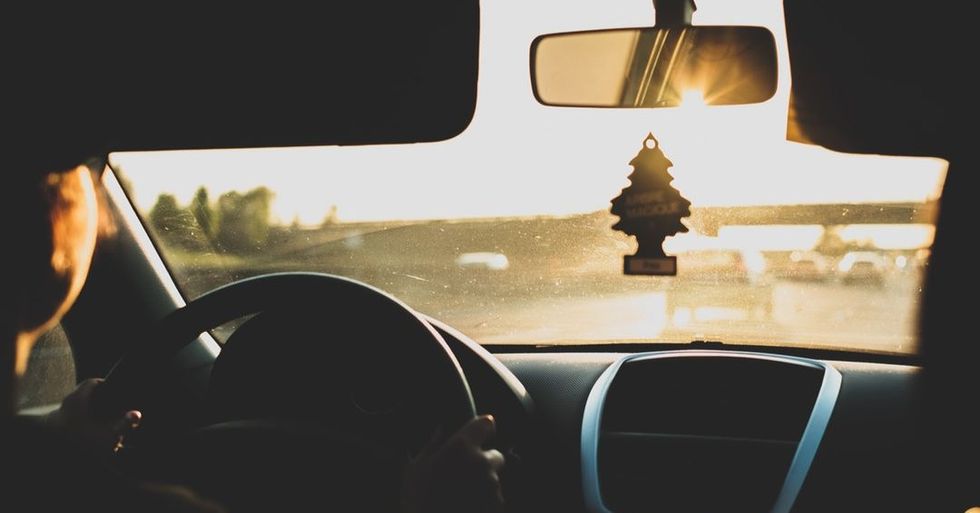Distracted driving – we’ve all done it. Whether you are changing the radio station, engaging with your passengers, talking on your phone or staring at the cute puppy walking by – there’s numerous ways we participate in the deadly activity.
According to the National Safety Council, over 5 million car and vehicle accidents are reported in the United States each year, and over 35,000 car accident related deaths in 2016 – 10 percent of those stemming from distracted driving collisions.
Although your parents always tell you to put your cell phone down while driving (and they’re right – you really should), they also engaged in the act when they were young adults, just in different ways. With technology advancing at a rapid rate, our lifestyles are changing and becoming more fast-paced. This means our communication styles and how we spend our free time are changing as well.
Distracted driving has always been dangerous – there’s no doubt about that. Some ways that distracted driving has changed in our lifetimes are:
Cell Phone Use
The most obvious distraction of the modern age – CELL PHONES. Your parents were not cruising around in their 1970s Ford Pinto (for the real youngsters – this is what a Pinto looked like) texting their friends. If they were lucky (or wealthy) enough, they got a car phone in the 1980s – but that was still a far cry from the phone use going on in cars today.
According to a 2016 AAA Foundation road safety study, drivers aged 19-24 were more likely to engage in risky cell phone behavior like reading or typing text messages while behind the wheel. Over 40 percent of drivers admitted to engaging with text messages while behind the wheel in 2016.
Texting and talking on the phone aren’t the only ways cell phones are playing a part in the distracted driving epidemic. Changing the song on iTunes, stalking the newest Bachelor contestants on Instagram, or inviting your friend to play Candy Crush on Facebook (but really, you should never invite someone to play Candy Crush – this isn’t 2013) are all perfect examples of how social media has become an enabler of distracted driving.
Eating and Drinking
Remember when I said that our lifestyles are becoming more fast-paced? That was implied for the way we eat our food, too. Now of course your parents had food back in the day, but when it came to fast food, they only had a handful of options. Today, the “on-the-go” food trend is flourishing with a grab and go spot on almost every street corner – it’s hard to pass them up especially when you’re in a hurry. With our packed schedules and “on-the-go” mentality, many college students take their food on the road with them.
Whether you’re rushing to make it to class on time (and deal with horrendous campus parking) or you’re running late for your shift at work – you’ve got to find time to eat! These are reasons that a study by Exxon Mobil found that 70 percent of drivers eat while they are driving, and 83 percent drink non-alcoholic beverages while behind the wheel.
The National Highway Traffic Safety Administration (NHTSA) estimates that eating while driving increases the likelihood of a collision by 80 percent and attributes it as a cause for 65 percent of near-miss crashes.
Rowdy Passengers
Uber, Lyft and other ridesharing programs have been a godsend in reducing DUIs and drunk driving accidents. But it does encourage distracted driving with rowdy passengers. For some passengers, especially those in college, ridesharing services are the go-to form of transportation when leaving a party or social event. Alcohol tends to make passengers more rowdy and harder to deal with – posing a huge distracted driving risk for the Uber or Lyft driver.
Uber reported they had 2 million drivers in 2017, and over 65 million customers throughout the world. - meaning there are about 32 riders for every Uber driver. With over 6.5 million rides taken on Uber and Lyft per day, it’s easy to see how the drivers can quickly get distracted when tending to their passengers. Trying to keep a 5-star rating as well as get their passengers to their destination safely becomes a balancing act.
Your parents used to just have to deal with a friend driving them around or the occasional taxi. But ridesharing is now allowing passengers and drivers to interact on a level not previously seen in the transportation world – promoting distracted driving in today’s culture.
Although your parents aren’t entirely innocent themselves, they do still care about you and want you to be safe when you’re driving. If you wouldn’t drink and drive (and I truly hope that’s everyone) then you definitely shouldn’t drive distracted.
Mom and dad are (not always) right – but they are when they tell you to keep your eyes and attention on the road. For more information on how you can prevent distracted driving among your family and friends (or even your Uber or Lyft), visit End Distracted Driving’s website.



















